Filter by

Evolution of Lightweight Structures Analyses and Technical Applications
This volume contains studies on the evolution and function of lightweight constructions of planktonic and other organisms, and examples of how they can be used to create new solutions for radical innovations of lightweight constructions for technological application. The principles and underlying processes responsible for evolution and biodiversity of marine plankton organisms are highly releva…
- Edition
- -
- ISBN/ISSN
- 978-94-017-9398-8
- Collation
- 39 b/w illustrations, 82 illustrations in colour
- Series Title
- -
- Call Number
- -
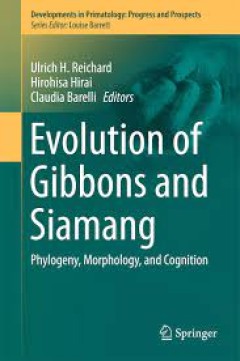
Evolution of Gibbons and Siamang Phylogeny, Morphology, and Cognition
This volume provides insight into gibbon diet and community ecology, the mating system and reproduction, and conservation biology, all topics which represent areas of substantial progress in understanding socio-ecological flexibility and conservation needs of the hylobatid family. This work analyzes hylobatid evolution by synthesizing recent and ongoing studies of molecular phylogeny, morpholog…
- Edition
- -
- ISBN/ISSN
- 978-1-4939-5614-2
- Collation
- 42 b/w illustrations, 18 illustrations in colour
- Series Title
- -
- Call Number
- -
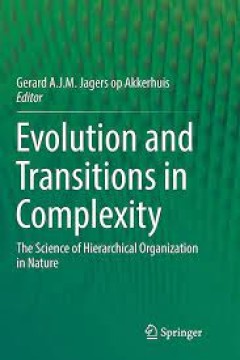
Evolution and Transitions in Complexity The Science of Hierarchical Organiza…
This book discusses several recent theoretic advancements in interdisciplinary and transdisciplinary integration in the field of evolution. While exploring novel views, the text maintains a close link with one of the most broadly held views on evolution, namely that of “Darwinian evolution.” This work puts forth a new point of view which allows researchers to define in detail the concep…
- Edition
- -
- ISBN/ISSN
- 978-3-319-43802-3
- Collation
- 25 b/w illustrations, 3 illustrations in colour
- Series Title
- -
- Call Number
- -
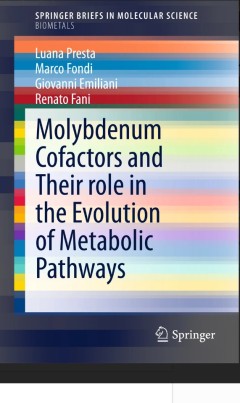
Molybdenum Cofactors and Their role in the Evolution of Metabolic Pathways
In this brief, the authors explore and review the current knowledge regarding the role of molybdenum in the evolution of biological systems and their interaction with biogeochemical cycles. Special emphasis is placed on biological nitrogen fixation and the nitrogen element cycle. The origin and evolution of molybdenum cofactor biosynthetic pathways as well as the evolutionary significance of…
- Edition
- 1
- ISBN/ISSN
- 978-94-017-9971-3
- Collation
- VI, 75
- Series Title
- -
- Call Number
- -

Molecular Phylogeny, Biogeography and an e-Monograph of the Papaya Family (Ca…
Fernanda Antunes Carvalho addresses an issue of key importance to the field of systematics, namely how to foster taxonomic work and the dissemination of scientific knowledge about species by taking full advantage of electronic data and bioinformatics tools. The first part focuses on the development of an electronic monograph of the papaya family (Caricaceae) using existing infrastructures of In…
- Edition
- 1
- ISBN/ISSN
- 978-3-658-10266-1
- Collation
- XIV, 147
- Series Title
- -
- Call Number
- -
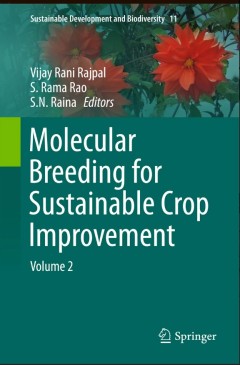
Molecular Breeding for Sustainable Crop Improvement
The world population is estimated to reach to more than 10 billion by the year 2050. These projections pose a challenging situation for the agricultural scientists to increase crops productivity to meet the growing food demands. The unavailability and/or inaccessibility to appropriate gene pools with desired traits required to carry out genetic improvement of various crop species make th…
- Edition
- 1
- ISBN/ISSN
- 978-3-319-27088-3
- Collation
- XI, 478
- Series Title
- Sustainable Development and Biodiversity
- Call Number
- -
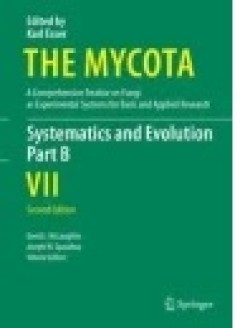
Systematics and Evolution
This volume includes treatments of systematics and related topics for both fungi and fungus-like organisms in four eukaryotic supergroups, as well as specialized chapters on nomenclature, techniques and evolution. These organisms are of great interest to mycologists, plant pathologists and others, including those interested in the animal parasitic Microsporidia. Our knowledge of the systematics…
- Edition
- -
- ISBN/ISSN
- 978-3-662-46011-5
- Collation
- XXIII, 311
- Series Title
- The Mycota
- Call Number
- -

Japan and the Great Divergence: A Short Guide
This text offers an accessible guide to the ways in which our growing knowledge of development in early-modern and modernising Japan can throw light on the paths that industrialisation was eventually to take across the globe. It has long been taken as read that the industrial revolution was the product of some form of ‘European superiority’ dating back to at least early-modern times. In The…
- Edition
- -
- ISBN/ISSN
- 978-1-137-57673-6
- Collation
- -
- Series Title
- -
- Call Number
- -
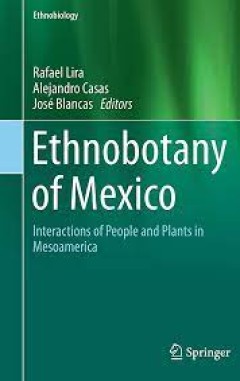
Ethnobotany of Mexico Interactions of People and Plants in Mesoamerica
This book reviews the history, current state of knowledge, and different research approaches and techniques of studies on interactions between humans and plants in an important area of agriculture and ongoing plant domestication: Mesoamerica. Leading scholars and key research groups in Mexico discuss essential topics as well as contributions from international research groups that have conduct…
- Edition
- -
- ISBN/ISSN
- 978-1-4614-6669-7
- Collation
- 21 b/w illustrations, 71 illustrations in colour
- Series Title
- -
- Call Number
- -
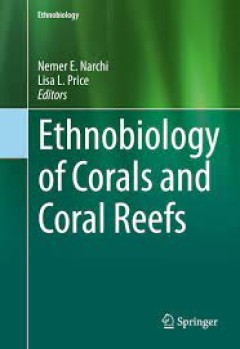
Ethnobiology of Corals and Coral Reefs
This book explores the ethnobiology of corals by examining the various ways in which humans, past and present, have exploited and taken care of coral and coralline habitats. This book will bring the educated general audience closer to corals by exploring the various circumstances of human-coral coexistence by providing scientifically sound and jargon-free perspectives and experiences from acro…
- Edition
- -
- ISBN/ISSN
- 978-3-319-23763-3
- Collation
- 13 b/w illustrations, 60 illustrations in colour
- Series Title
- -
- Call Number
- -
 Computer Science, Information & General Works
Computer Science, Information & General Works  Philosophy & Psychology
Philosophy & Psychology  Religion
Religion  Social Sciences
Social Sciences  Language
Language  Pure Science
Pure Science  Applied Sciences
Applied Sciences  Art & Recreation
Art & Recreation  Literature
Literature  History & Geography
History & Geography